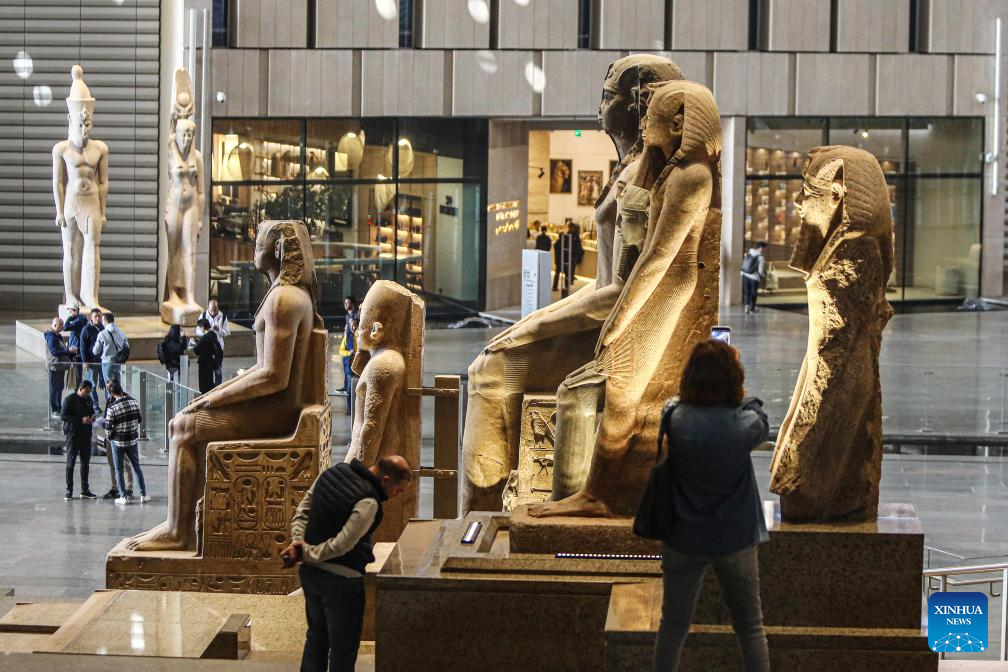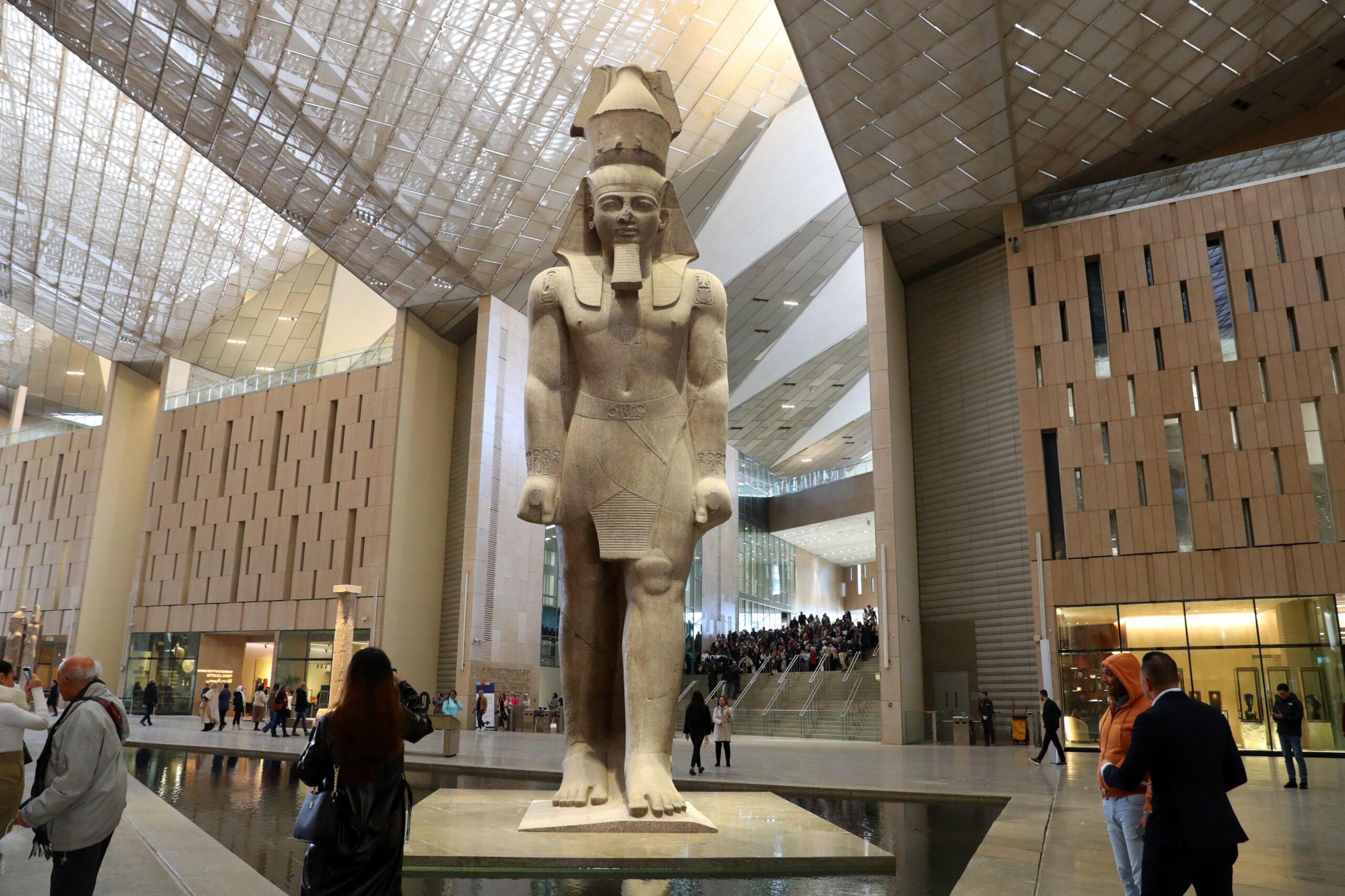A Voyage Through the Grand Egyptian Museum’s Staircase Gallery
Art&culture GEM Staircase Grand Egyptian Museum Hiistory
Malak Gharib
From kings and queens to the world! The Grand Egyptian Museum opened its signature staircase for trial as a vertical gallery on the 1st of December. An odyssey of art and history, the staircase feels like a six-story building with at least 60 artefacts displayed. Buckle up as we take you on a journey through the historic pathway, divided into four sections: “Royal Image”, “Divine Houses”, “Kings & Gods”, and “Journey to Eternity”.

Image via Xinhua
As a new home for ancient Egyptian statues, sphinxes, columns, and sarcophagi, the staircase has already become the GEM’s most iconic venue and a critical pathway. Connecting the Hanging Obelisk, the Glass Hall, and the Atrium (housing the colossal 3,200-year-old, 83-ton statue of King Ramses II), its space spans 6500 square metres and is divided into four sections.
“Royal Image”, the first section of the staircase, is made to align kings’ desires for portraits reflecting their absolute power and divine favour, symbolising their greatness. Royal statues and reliefs were found in temples, palaces, royal tombs, and sometimes in private houses and family tombs. Now, you get to see them displayed on the pathway at the museum.

Image via AhramOnline
The next tier, “Divine Houses”, displays a number of columns, sphinxes, and other pieces taken from ancient temples. The temple served as a sacred abode for the gods, wherein the essence of their divine beings resided in statues. These temples also functioned as sites for offerings for the king’s journey into the afterlife.
The third tier, “Kings & Gods”, commemorates these rulers with incredible representations and artefacts made in their honour. As the gods were responsible for different aspects of life, including the sky, the River Nile, the desert, and the underworld, you will find them depicted on this level of the staircase! The same was done for kings, who were in charge of the land of Egypt and represented the gods on Earth.

Image via Times
The last level, “Journey to Eternit”, is a gate to explore the afterlife, where ancient Egyptian royals embarked on their quest. From ascending to stars in the Old Kingdom to becoming Osiris, artefacts representing the afterlife embellish the location as you relish a mesmerising view of the Great Pyramids of Giza at the top of the staircase.
The Grand Egyptian Museum will house over 100,000 ancient Egyptian artefacts, including the complete collection from the tomb of King Tutankhamun, positioning it as the world’s largest museum dedicated to a single civilisation. The final opening of the GEM is expected later this year. Among the artefacts on display are the colossal statues of King Senwosret III, Amenhotep III, Akhenaten, Seti I, and Queen Hatshepsut. Various statues of deities include the statues of Ptah, Serapis, Sekhmet, and Rehorakhty.
recommended
 Arts & Culture
Arts & Culture
Art Workshops in Cairo: 6 Art Spaces Offering Niche Artistic Workshops in Cairo
art workshops Cairo Activities +1 Arts & Culture
Arts & Culture
The Coptic Museum: The History of Egypt to the Tunes of Psalms of David
arts & culture cairo museums +4 Health & Fitness
Health & Fitness


